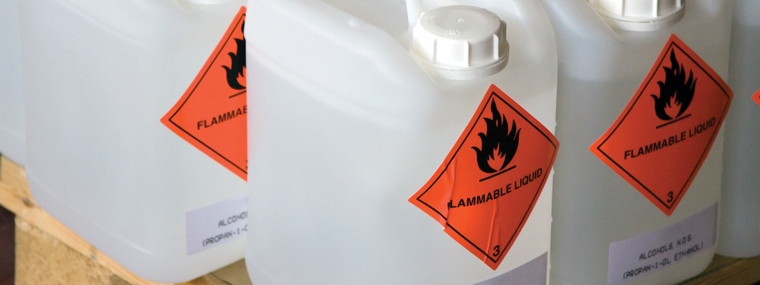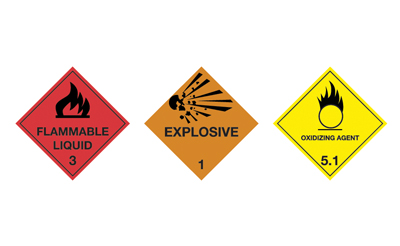
Recent Trends, Part II: MSDS to OSHA SBS and GHS
Published June 2015

In 2012, the Occupational Safety and Health Administration (OSHA) revised its Hazard Communication Standard (HCS) (29 CFR 1910.1200(g). The revised standard aligns with the United Nations’ Globally Harmonized System (GHS) of Classification and Labeling of Chemicals.
The revised OSHA HCS requires manufacturers, distributors, and importers to provide a safety data sheet (SDS) for each hazardous chemical. The OSHA SDS contains roughly the same information that was contained in the older material data safety sheet (MSDS), which it replaces.
The OSHA SDS is intended to be user-friendly. It includes 16 sections. Section 1 (identification), for instance, identifies the chemical and the supplier, as well as intended uses of the chemical.
Specific requirements of the OSHA SDS are being phased in through June 1, 2016. The first compliance date was December 1, 2013, the date by which employers were to have trained workers on the new SDS format and new elements of the SDS.
The requirements for training are thoroughly prescriptive. If a worker has a limited vocabulary or is not literate, the employer must devise a way to account for that in training. An employee might not be able to read the SDS, but the employee must demonstrate understanding of each of its 16 sections.
To achieve compliance with the SDS (and correspondingly the GHS), manufacturers and distributors have been expending the time and resources necessary. It’s part of doing business.
OSHA offers technical assistance with the transition to harmonized SDS. There are also many companies that specialize in providing technical assistance on the transition. Manufacturers and distributors have also been working through the requirements on their own.
“This has been an entirely in-house project,” says Matt Roosien, chemical department manager at Hydro-Chem Systems, Inc. in Grand Rapids, MI.
Signal words on a label are intended to quickly convey information about risk. ‘danger’ and ‘warning’ are the two signal words. Danger is for more severe hazards and warning for less severe hazards. Danger takes precedence if there is more than one hazard, as only one signal word can appear on a label.
“In 2011, our company was aware of the transition to GHS regulations,” explains Roosien. “We began to research SDS software that would generate GHS-compliant labels and SDSs for all our products. To ensure that we continue to remain at the forefront of the industry, we made a decision in March of 2011 to purchase the new software and began generating GHS labels and SDSs.”
The goal of harmonization is a good one, says Roosien. “The most important change between the MSDS and the OSHA SDS is that there will be uniformity. All materials will have the exact same format for an SDS, which will create better understanding, improved safety, and overall consistency throughout various industries.”
Transition does require investment. “The purchase and management of the software for SDS generation has added to the cost of doing business,” says Roosien. “However, the benefit from having this software has probably also added revenue to our business by providing more efficient ways of generating labels and SDSs.”
In the interval preceding full implementation of harmonized SDS, there is another cost to companies that have moved forward faster than others. They are put “somewhat at a disadvantage because they compete with other companies that have not yet implemented” GHS, explains Roosien. At full implementation, however, all companies should have borne comparable changeover costs.
Choices
Deciding whether to use an outside consultancy or tackle the transition directly may shift during the process. “The transition to GHS SDSs has been a 90 percent in-house operation here,” says Patty Meehan, national sales manager at Vector Laboratories in Youngstown, OH. (Company president Claudia Hirschochs also weighs in regarding choices made and progress.)
“We got some initial MSDSs converted using a conversion company, and we used the Internet for additional sources,” says Meehan. “With these tools, we proceeded to do the conversions ourselves. We used the OSHA website for any research and needed information.”
There are costs associated with the SDS beyond initial conversion. “We use more paper because instead of the MSDS being one piece of paper—front and back, we now use four pieces of paper—front and back,” explains Meehan. “It takes more time to print, collate, and staple the SDS.”
Definitely, OSHA SDS adds to the cost of doing business, says Hirschochs. “Not only does it take more time, more paper, more ink, more postage, but it also costs money and time to train employees and others in the new requirements. The conversion process itself costs money, as we had to pay a firm initially to do the conversion of some MSDS for us.”
At that, the cost of the transition is not the end. “There are additional labeling requirements that will entail new purchases,” says Hirschochs. Then, there is the cost of doing educational outreach for customers.
“As part of a company’s good customer service, we have to take the time to educate and inform our customers on these new SDSs,” says Hirschochs. “Overall, the changeover costs are significant.”
How are customers reacting to the new SDS? “We’ve already had feedback from some of our customers,” says Meehan. “They do not like the new format. They may not have color printing in their offices. They don’t want to print all the pages and some have complained that more pages means the SDS does not fit in the window envelopes they are using to ship out products.”
It’s a rhetorical question now to ask whether the conversion to OSHA SDS and harmonization was necessary. But some are asking the question anyway.
“Sometimes simple is best,” says Meehan. With that in mind, there might have been a more streamlined way to convey harmonized information. (And perhaps that will come in the future with more change.)
“The addition of more pictograms and warning labels” is one obvious difference in the SDS (in contrast to the MSDS), says Meehan. Yet she’s not sure such high visibility advice is necessary for professionals. “Individuals familiar with industrial chemicals know how to use proper precautions when handling any detergent or chemical.”
Hirschochs believes that the prominence of pictograms is great so visual aids can take the place of text that many cannot read. “Such individuals will be able to see that there is a need to be cautious with certain products as well as safety measures to use,” she explains. “Pictograms make it very, very evident.”
Complexity
The challenges inherent in being fully compliant with the OSHA SDS are many. Consider just a few of them.
Signal words on a label are intended to quickly convey information about risk. ‘Danger’ and ‘warning’ are the two signal words. Danger is for more severe hazards and warning for less severe hazards. Danger takes precedence if there is more than one hazard, as only one signal word can appear on a label.
Pictograms are to be constructed according to exact specifications of shape and color. And sections 12 to 15 (ecological information, disposal considerations, transport information, and regulatory information, respectively) of the SDS, although non-mandatory because they do not fall under OSHA enforcement, must be included in order to meet the GHS requirements. In addition, the hazard statement or statements on the label must detail the degree and kind of hazard with great specificity, and it must be consistent from producer to producer.
Complexity aside, as of June 1, 2015, OSHA will require that all new SDS meet its HCS. For a concise review of the 16 categories that must be included, consult the www.osha.gov/Publications/HazComm_QuickCard_SafetyData.html, an OSHA QuickCard.





